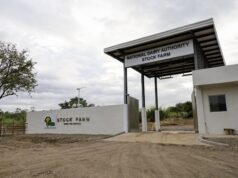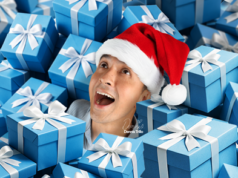(MOA. Holding copies of the memorandum of agreement they signed are CDC president-CEO Noel F. Manankil, BCDA VP for business development Arrey A. Perez, Coast Autonomous chairman-CEO David M. Hickey, BCDA president-CEO Vince B. Dizon, and Coast Autonomous chief technology officer Pierre Lefevre. Photo by Bong Lacson)
CLARK FREEPORT – The contract for the first deployment of driverless cars in Asia for a major international event was signed on Tuesday between the Bases Conversion and Development Authority (BCDA) and Coast Autonomous LLC.
The memorandum of agreement was signed by BCDA president and CEO Vince Dizon and Coast Autonomous chair and CEO David Hickey at the BCDA office at the Clark Global City here.
“We share the vision that really emulates New Clark City (NCC), that cities must be for people,” said Hickey after the signing.
“Our technology is really designed to put the pedestrians first to make the cities more walkable, to make the cities more breathable, to cut down on pollution,” he added.
Hickey was with Pierre Lefevre, chief technology officer of Coast Autonomous who explained that the driverless vehicles will have their own 3D electronic mapping technology to determine their route.
Lefevre was referring to Lidar (light detection and ranging), a high definition mapping machine which uses instrument that fires rapid pulses of laser light at a surface, some at up to 150,000 pulses per second, equipped with a sensor that measures the amount of time it takes for each pulse to bounce back lending more accuracy to its method.
He explained that the autonomous vehicles run at a slow 10-kilometer per hour on busy streets full of people but can accelerate up to 60 kilometers per hour.
“The vehicles are not dependent on GPS (global positioning system) and thus can operate in urban canyons created by tall buildings, under tree canopies and even underground or in tunnels. Coast’s Autonomous’ technology is highly flexible and makes cities and campuses more walkable. The future mobility should be connected, autonomous, shared and electric,” he added.
The Lidar mapping machine was installed on a vehicle on Wednesday to map out the course for the autonomous vehicles at the NCC.
Dizon said for the first time in Asia, driverless cars will be deployed in a major international event referring to the SEA Games this coming Nov. 30.
“We now have cars without drivers. This technology showcase what is possible today with technology,” he said.
Dizon said three driverless cars that can accommodate 14 passengers each are expected to arrive sometime in October as he also expressed thanks to Coast Autonomous for choosing NCC for their self-driving cars.
“We will be very proud to be the first place in the country for Coast Autonomous and first in Asia to experience this,” he added.
Hickey said: “the SEA Games celebrate athletes, but in NCC we celebrate leadership, vision and really just true grit in building a city, the first smart city in the Philippines so we knew we have to part of it and we are just honored to be selected.”
The autonomous vehicles will be fully electric and will have minimal or zero carbon footprint.
The autonomous self-driving vehicles will be used to transport athletes and the riding public during this year’s SEA Games.
Meanwhile, there are 56 sports to be played by nearly 10,000 athletes from 11 countries at the biennial event. The 11 countries are Brunei Darussalam, Cambodia, Indonesia, Laos, Malaysia, Myanmar, Philippines, Singapore, Thailand, Timor-Leste, and Vietnam.





